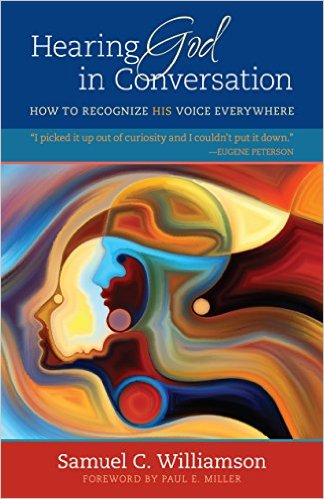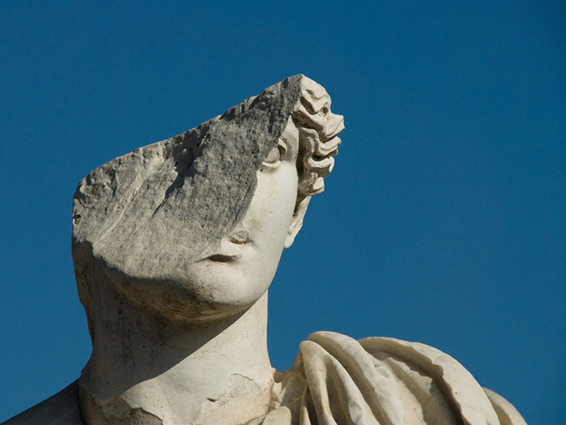|
Vandalizing
God
.
by Sam Williamson
I attended a magnet high school in Detroit,
Michigan. Cass Tech was a university preparatory
school that emphasized science and the arts. One
night before an art showing, a vandal broke in,
defaced multiple paintings, and took a hammer to
dozens of sculptures.
Imagine the angry anguish of the victims: the lost
hours of creativity, the shattered dreams of
masterpieces. But the hours and dreams weren’t the
victim’s greatest griefs. As one vandalized friend
said to me, “It was as if the thugs had
sledgehammered me!”
Because all art is made in the image of its
creator.
In that sense, all of creation reflects God: the
beauty of the sunset and the glory of a half moon,
snowcapped mountains and whitecapped oceans, all
mirror the glory of God.
However, it was only after God made all of
nature that he said, “Let us make man in our
image, after our likeness.” The deepest reflection
of God involves more than mere creation.
Simple
or Profound
The Hebrew word for “image” (when God talks of
creating humanity) originally meant shadow or
reflection. It required the sun. It means that God
is the sun and we are moons. To image God, we need
the brightness of God to shine on us, and then
ultimately through us.
In the simplest sense of imaging God, cabbages and
clams—as well as Mother Theresa and Judas
Iscariot—belong to general creation: all reflect
the great Artist, to some degree.
But in the profoundest sense, God lets us choose
to image him or not; to decide to be moons rather
than suns. Adam and Eve chose personal glory; they
wanted to be the light not the mirror.
Deism
Many thought leaders of the Enlightenment believed
in a theology called deism. Deism says God created
the world, set it spinning like a child’s toy top,
and he sat back to watch what would happen. It
says God refuses to intervene in the affairs of
the world.
It’s why Thomas Jefferson cut
out the supernatural from the Bible,
because he believed God no longer acts today.
Jefferson liked the morals of Jesus, but he didn’t like the miracles of
Jesus.
Simple imaging of God can be like deism. We don’t
need him anymore. He made us—so we’re in his
likeness—and we continue to reflect him, without
his help. Just ask any snail.
But the profoundest meaning requires God’s
activity in us today. It requires a humanity who
will accept our need for God himself to do his
work through us. It means we choose his glory over
ours, to say, “Unless the Lord builds the house,
its workers labor in vain” (Psalm 127:1).
The Humility of Imaging God
King Saul lost his kingdom when he “builds
a monument in his own honor.” God says to him,
“You started out thinking little of yourself, and
that was good; but now you are grabbing for your
own honor.” King Saul wanted to be the painter not
the painting.
The profoundest reflection of God requires
humility: we no longer live to create our own
legacy—like Adam and Saul. But that is hard to do.
Our sinful flesh wants others to respect us,
accept our ideas, and like our Facebook posts. We
crave a monument in our honor.
We grasp for all the glory we can get. And in the
very act of grabbing, we vandalize the profoundest
likeness of God. In our quest for stardom, we
deface God’s paintings and hammer his sculptures.
Let’s abandon our pursuit of personal legacy: it’s
more glorious to be the moon than a snail.
Sam

Sam Williamson has published
numerous articles and has written two books.
He has a blog site, www.beliefsoftheheart.com,
and can be reached at
Sam@BeliefsoftheHeart.com.
Hearing
God in Conversation: How to Recognize
His Voice Everywhere, by Samuel C.
Williamson, published by Kregel
Publications, 2016, available from Amazon
Top
photo of Roman Ruins - Ostia Antica:
credit mcpotts
at istockphoto.com
|

